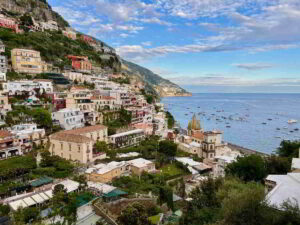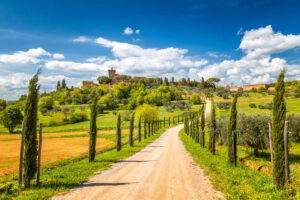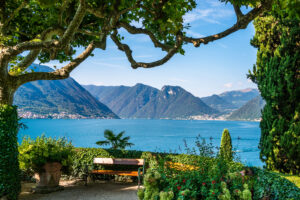How Overtourism Can Impact the Food on a Tuscany Tour
In this article, we provide tips to find authentic food on a Tuscany tour, despite the negative impact of overtourism in Florence and across the region.
Tuscany is one of the most visited regions of Italy, with all the pros and cons that go with it. Its capital, Florence, is seriously struggling with the exorbitant number of tourists who embrace a very superficial way of traveling and rush from site to site.
The effects of globalization and the influence of social media’s distorted messages can affect the livability of an urban center like Florence on many levels. The food displayed across the city, for residents and tourists, is one of the first consequences.
Maintaining ethics and integrity in dining is the new challenge for restaurant owners in Florence who have to face whether to please the demand of superficial tourism or pursue authenticity and seasonality on their menus.
Not all tourists are the same and the curious travelers who sign up for our small group tours, like the Grand Tour of Tuscany, are looking to try new dishes, eat what locals would eat, and go beyond the stereotypes of Italian food.
Tips to Find Authentic Food in Florence and on a Tuscany Tour
In a recent article written by Emiko Davies and published on Italian newspaper Corriere della Sera, Frassica, a Florentine restaurant owner, points out how certain iconic food is exploited and “food becomes a caricature of local culture”.
The article also refers to the closing of small shops and restaurant overwhelmed by chains that more and more take over the city center of Florence.
The questions raised are about the loss of genuine restaurants, those with personality and ethic choices behind the details. Once lost, what remains, in particular for the residents?
Overtourism and Food in Florence
One of the latest trends in Florence is to stand in line for a sandwich that has become “viral” after some social media influencers post about it. The origin and quality of ingredients is often neglected by most customers.
Then off to buy cannoli, a typical Sicilian dessert that in Sicily would have never been stuffed the day before to avoid the shell getting soaked. And certainly not displayed in a shop window under the sun.
Overtourism tends to bring flocks of visitors who don’t have time or interest to scout what’s local in the streets of Florence. It is in most cases related to mass-market tour operators that prioritize other selling points. These tours consist of a short city tour with basic information, set to check off the list of famous sites. Next is a mandatory visit to leather and gold shops recommended by the organizer in exchange for commissions. Lastly, an included meal with a tourist menu or some limited free time to grab something quick to eat.
With this premise, it’s clear that the interest in authentic food is either forgotten or limited to stereotyped dishes. Consequently, many restaurants have adapted their menus to satisfy the demand for a limited number of popular dishes.
Tourism is a positive thing that benefits restaurant entrepreneurs, shops, and stores. However, respect for tradition, gathering places, and local activities are also needed, at a time when store and restaurant chains are taking over.

How to Select Good Restaurants on a Tuscany Tour
From classic Tuscan dishes like ribollita, a thick, hearty vegetable soup, to bistecca alla fiorentina, a grilled T-bone steak cooked very rare, famous Tuscan food is displayed across Florence. So are cheeses, cured meats, and fresh produce that form the foundation of Tuscan cuisine.
Which tips to find authentic food on a Tuscan tour can be given to a first-time visitor in Florence? How to recognize good restaurants dedicated to carrying on the tradition and avoiding the touristy spots?
Reading the menu
Reading the menu before sitting at the table can be revealing. An excessive selection of courses generally shows a lack of seasonality and care of details. It is logistically impossible for a restaurant kitchen to prepare on a daily basis dozens and dozens of courses.
It is considered normal and sustainable in a modern kitchen to have certain dishes cooked one day, then divided into single portions, frozen, and regenerated when an order comes.
On the contrary, a risotto should not take less than 20 minutes to be served, as that is the cooking time of rice. Reliable restaurants with ethical principles prepare it on the spot, better if next to a big pot of boiling broth made with the vegetable and meat cuts left from other recipes.
Some preparations like wild boar stew, game, peposo beef, and stuffed pasta can be on the menu all year round. On the contrary, vegetables, soups, and even fish belong to certain seasons.
Tips to Find Authentic Restaurants in Florence
Another way of selecting restaurants is to plan ahead of time and research reliable guidebooks like the Michelin Guide, Slow Food’s Osterie d’Italia, Gambero Rosso, and more. That doesn’t necessarily mean that a restaurant not listed on any guide is bad, but today access to reviews and word of mouth can be useful.
Another tip to find authentic restaurants in Florence and on a Tuscany tour is to explore the less visited streets and towns, away from the crowds. In Florence, the market of Sant’ Ambrogio and its surroundings boasts small locally-owned restaurants where locals go. The neighborhood of Oltrarno used to be intimate and quiet but in the last years, it lost some of its authentic charm.
Tuscany is much more than the big popular names such as Siena, and San Gimignano. In our Grand Tour of Tuscany, guests enjoy a hassle-free experience where the driver and the guide take them out for dinner in remote villages and places hard to find for people who come on their own.

The Wine Windows in Florence
One of the most recent tourist attractions in town are the “wine windows”, small openings on the ground floor of former aristocratic or middle-class palaces where nowadays an adjacent bar sells wine by the glass.
Once exploited by the families who lived in those buildings to make extra cash and sell flasks of their wine to the public, these windows had several advantages. Because they were small, they were not considered regular shops and, therefore, not taxable. Moreover, these transactions avoided personal contact with customers, a valuable perk during epidemics.
While giving a new life to these wine windows could be charming, customers should always remember that wine in Italy is one of the most controlled products. A system of appellations guarantees the quality and origin of wines, information that must be displayed by law on the label.
While it is understandable that many visitors don’t necessarily care for a wine lecture when buying a glass of wine, the basic rules of serving wine should be checked. Chianti and Brunello di Montalcino, the two most representative Tuscan wines, should have a small DOCG label around the neck of the bottle. Asking to check the bottle, and read the back label is the customer’s right.
It would be a shame to drink questionable wine in Tuscany, even if it is worth a popular selfie in front of a picturesque wine window.
Tips to Find Authentic Food on a Tuscany Tour: the Good Gelato
One of the reasons behind the opening of dozens and dozens of gelato shops in Italy is the cheap industrial mixture of ingredients available on the wholesale market for gelato professionals.
In addition to artificial flavors and colorants, those preparations are blended in ice cream makers that incorporate air and the high quantity of water produces large ice crystals.
The result is a light, airy but compact texture that can be shaped in fanciful steep mountains of gelato, sometimes pointed spirals that from shop windows are definitely attractive to the eye of the inexperienced first-time visitor.
The benefit for the seller is more volume in their product, therefore flavorless ice crystals and air are sold at the price of gelato. Sadly, the taste is diluted and on the cone, it melts very quickly.
The real Italian gelato goes through a production technique called mantecazione which consists of stirring slowly for a long time the liquid mixture until very small ice crystals form. The flavor is more concentrated, and the texture is creamy and not hard.
There are many online blogs with lists of more or less good places to buy gelato in Florence. In our Grand Tour of Tuscany, the tour manager and the local guide are there to point out a few spots that stand out for the ingredients selection, production method, and for having a seasonal and limited flavors choice.
Strawberries in Italy don’t grow all year round. Pistacchio nuts are not sparkling green. Just think of these basic principles when buying a cone. And then the look: good gelato places don’t show piles of product on their window display, they keep it in buckets not visible to customers because of the creamy texture.

Grand Tour of Tuscany, a Small Group for Foodies
Tourism is a fundamental economic activity in Italy and it benefits several businesses. While larger cities can better absorb the enormous wave of tourists, smaller urban centers such as Florence and Venice struggle to concentrate the same amount of visitors in smaller pedestrian areas. Moreover, in the last few years, several cases of negative behavior, degradation, and monument vandalization have been reported in Florence.
In this scenario, food has become a destination for travelers, but it is also the responsibility of tour operators like Meet Piemonte to provide help in navigating between genuine and fake offers.
Our Grand Tour of Tuscany features a restaurant selection that outlines the contrasts of Tuscan cuisine. From the hearty, rustic dishes of the countryside to the innovative creations of Tuscany’s urban centers, the local culinary scene is a true feast for the senses.
That’s why Meet Piemonte Tour Operator offers a detailed Tuscany tour, exploring different corners of the same region.






